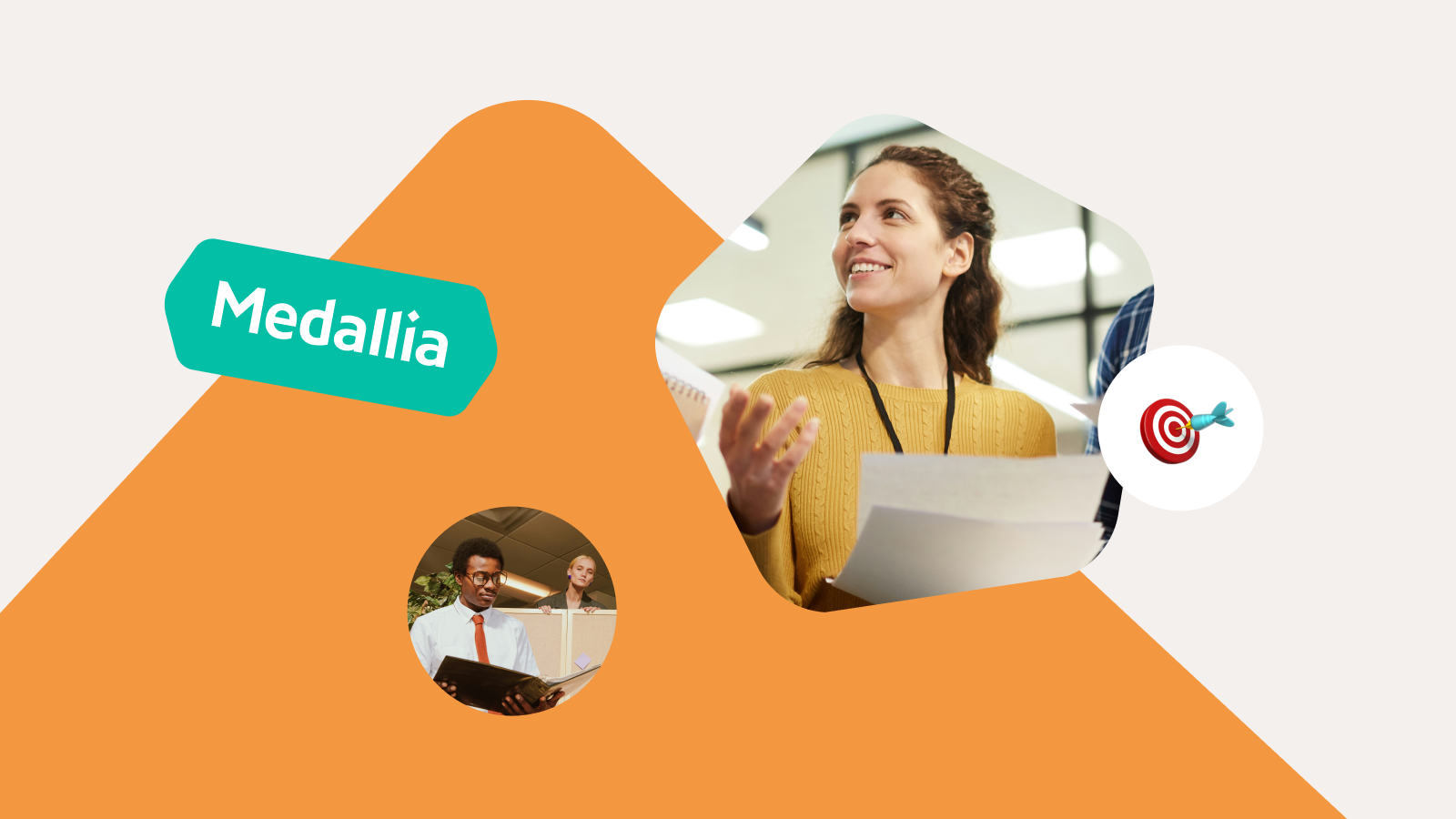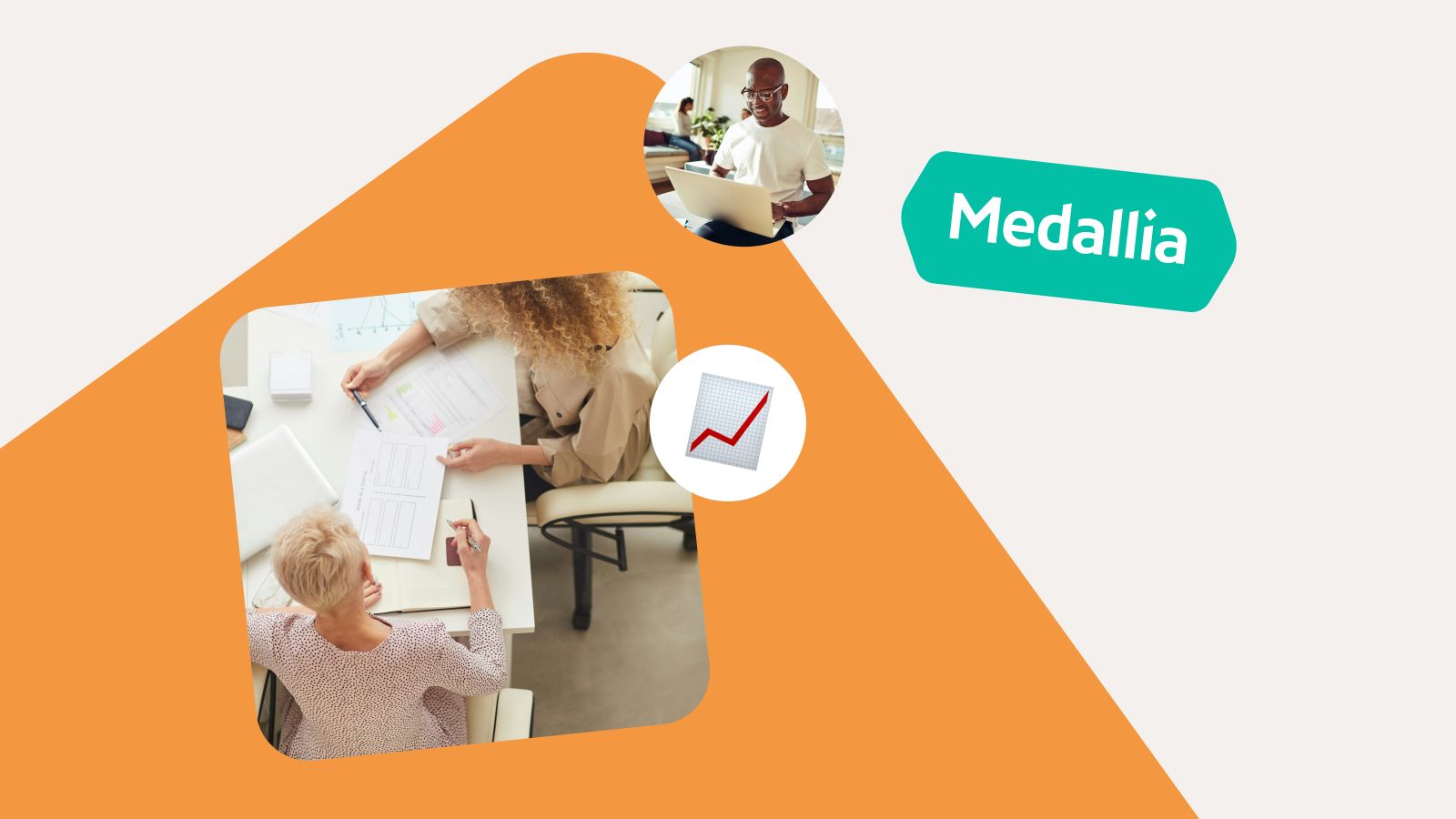Employee Experience & Data: 4 Key Insights from the Experts
February 28, 2022
Employee Experience
Learn more about what EX, HR, and People Analytics experts think you should know about employee experience data.
What better way to kick off 2022 than with a flurry of meaningful employee experience (EX) and customer experience (CX) insights from the experts? In a series of recent webinars, we heard from leaders in EX, HR, and People Analytics: Melissa Arronte, PhD (EX Solution Principal, Medallia), Ian Cook (VP People Solutions, Visier), David Ostberg, PhD (EX Solution Principal, Medallia), and Lydia Johnson, MS (Employee Experience Advisor, Medallia).
The evolution of EX and CX programs looks different for every organization. There’s truly no “one-size-fits all” for how either of these practices should look. These sessions took a deep look at what’s working in the world of “experience” and offered loads of helpful information that you can use today to iterate on your own practice. Though we could probably write a book based on these sessions, we’ll start with four key takeaways:
1. Experiences (like people) are multidimensional
It’s challenging to understand a single datapoint from a moment in time. What’s the context around that information? What influencing factors lead to that particular reaction or situation? Ian Cook shared, “You know, the sentiment about people is one piece, their situation in terms of the work they do or jobs they have is another, linking up to production and how that works is another still…How do we use people analytics and data to make organizations smarter and better?”
In response to the complexity of employee experience data, Melissa Arronte relayed how over 15 years ago she was focused on running the annual engagement survey at her company. She owned this process for nine years, and when she accepted a new position with Citizens Bank, she no longer owned the annual engagement survey. “At first, I was lost… how could I not own the engagement survey? How can that be in another department? But then I found something new that was even more helpful. I met a new leader who wanted more frequent feedback, and we implemented an always-on employee experience practice!”
Ian and Melissa both expressed the importance of collecting feedback, analyzing the data, understanding the information and trends that emerge and swiftly moving to action to make a positive impact on the people and processes that make up organizations. Melissa added, “Moving to an always-on approach really changed my perspective. We moved away from a focus on engagement to a focus on what’s happening today, and what do we need to better enable [our employees]?”
2. More data doesn’t mean more work
Melissa dug into the concept of more data helping to create better, more efficient, and meaningful work (as opposed to the common misconception of a greater volume of work): “The idea that we can use tools from both the EX and CX disciplines that grew up pretty independent of each other, but can inform each other — we get so much value out of using those tools together. Just think about how customers had the opportunity to provide feedback anytime for years, but with employees we try to set a particular cadence that’s arbitrary for the employee when feedback can arise at any given time. We could really benefit from learning from the two practices and moving each other forward faster together!”
Ian Cook shared, “We keep hearing about experience, and what does that really mean? It’s clearly not just engagement, but then what is it? One of the topics Melissa and I have discussed is that when you describe an experience, there’s lots and lots of different touchpoints… But you could get really lost in trying to orchestrate and capture [feedback] at every single one of those places because there are just thousands of questions you could ask.” This is where the concept of “always on” feedback starts to make an impact for leaders, managers, and frontline employees. Instead of exclusively materializing the right time to ask the right questions day in and day out, you can empower people to provide feedback when they’re feeling up to it. Then it really comes down to the tech stack you have and how accessible it makes data insights.
How can managers develop a data-driven approach to knowing what actions are effective? “It’s not that managers want to make decisions based on intuition or observation. It’s the lack of data. So when they can see what’s happening in their group compared to an internal benchmark, or ‘here’s what’s happening’ on average, now they can start to understand that there’s a trend within a broader view,” explained Melissa.
It’s all about having your experience data available and in a consumable (typically visual) format so that leaders can positively impact the business. As Lydia Johnson explains, organizations can “benefit from having all of their EX and CX information in the same online dashboard,” and that these “combined insights drive improvements to every aspect of the business. Furthermore, instead of having insights held captive by a small group of people, you can create an army of action-takers!”
3. What’s greater than listening? Truly understanding!
The relationship between EX and CX is not necessarily a straight line forward, in fact it’s actually quite cyclical and ever-evolving. So, collecting “moment in time” data is only telling one very specific part of the story. To get the full picture, and to create a deep understanding of the experiences your company is creating, it’s critical to create a holistic experience that generates higher quality feedback and service.
David Ostberg elaborates by saying, “Our goal is to help companies understand what creates great experiences for employees and customers alike. We believe the most effective way to do that is through what we call continuous understanding. Things like overly complex processes, dysfunctional tools, or lack of information and enablement are among the most common barriers that detract from people having great experiences. Fortunately, through continuous understanding, we have the ability to identify exactly when and where those obstacles are showing up from both the employee and customer perspectives.”
4. Experiences impact business outcomes
Ian Cook discussed data silos and how that impacts business. “One of the traps that organizations fall into is this notion of protection of the data being ‘ours’: only we understand it, and we’re the ones who are best to… Whereas, when you start to bring different components together, you actually understand that business is a system, and point A affects point B which then affects point C.”
Ian proceeded to share a client’s experience: “It took about 6–8 months to build the bridge [between customer and employee data] where they started to uncover that because we’re short-staffed, managers are changing, or a certain policy was put in place that made people uncomfortable, that’s having an effect on how they’re showing up at work and that’s having an effect on the customer! If you’re not looking at [EX & CX] data together, you’re not thinking about how that impacts your business’ end state.”
Listening and collecting experience data just isn’t enough anymore. Ian explained, “To do experience well, and to generate the right kinds of experiences, one of the first things you have to identify is, ‘where am I going to get the most value?’ It’s one thing to capture the data, but how do we use it to make a difference in the business?”
He added, “You need to get all of your data together, but not just for the sake of having it together. It’s so that you can identify opportunities to reduce risk, improve cost, potentially lead to future revenue and make a meaningful impact on the business. Then over the next 2–5 years, we’ll all be figuring out how we do that repeatedly, fast, and in a way that drives manager action.”
We encourage you to leverage these takeaways today to make improvements in your own EX and CX programs! Want to keep exploring? Learn from experience leaders at T-Mobile, Bank of America, and more.








